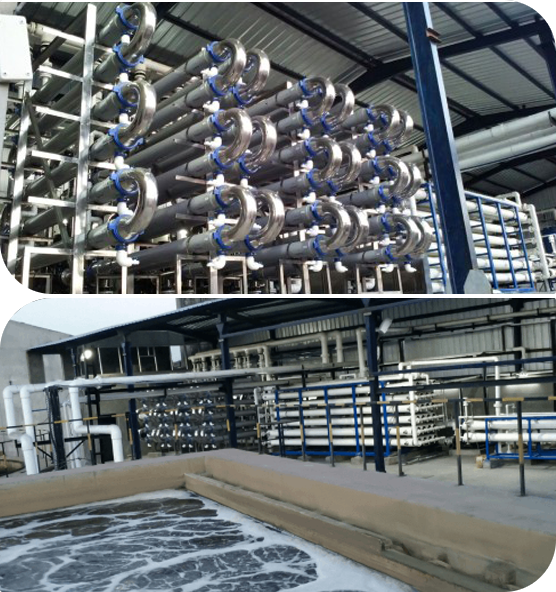
Waterman Engineers Australia has become the top makers of Zero Liquid Discharge process. A ZLD process is a therapy procedure which can be utilised to get rid of every one of the liquid waste from the procedure. The intention of ZLD h2o treatment method is to scale back wastewater economically and generate potable water that is fit for ordinary use. Zero discharge process is a sophisticated treatment process that comprises ultrafiltration, reverse osmosis, evaporation and fractional electro deionization. And we have been a effectively-known provider of ZLD methods.
In several Industries, for example energy, oil & fuel, chemical substances, mining and others, a great deal of wastewater is created that must be managed. Conventionally, this discharge of wastewater is finished by way of a plant outfall to the surface area h2o physique like an evaporation pond, or occasionally deep nicely injected. These techniques result in quite a few environmental issues by the public in several locations of the entire world, as drinking water is a scarce supply and its administration need to be monitored. These issues have resulted from the institution of ZLD procedures by numerous industries to minimize their environmental footprint and enrich sustainability. And, Waterman Engineers Australia are most effective ZLD suppliers you will discover for This technique.
Attributes OF ZERO LIQUID DISCHARGE SYSTEM
The Qualities of a Zero Liquid Discharge program can differ based on the certain layout and know-how made use of. However, some typical properties of ZLD methods contain:
Water Conservation: Certainly one of the main objectives of ZLD systems is to preserve drinking water by minimizing the discharge of liquid squander in the natural environment.
Significant Drinking water Purity: ZLD methods are designed to produce superior-excellent drinking water that's free from impurities and contaminants, that makes them ideal for use in several industrial procedures.
Flexibility: ZLD devices are sometimes developed to support a broad number of input liquid streams, that makes them flexible and well suited for use in several industries.
Sophisticated Wastewater Cure: Zero liquid discharge techniques use advanced wastewater treatment method methods to take away impurities and contaminants in the effluent, manufacturing higher-excellent h2o.
Waste Reduction: ZLD programs help minimize squander by reducing the volume of liquid waste that should be disposed of and by developing a concentrated, sound waste substance that can be securely disposed of.
Strength Performance: ZLD systems could be Strength-intense mainly because of the higher Vitality demands of evaporation and various wastewater treatment processes. Nevertheless, developments in technological innovation are generating Zero liquid discharge devices additional Electricity-successful and value-powerful.
Waterman Engineers Australia manufactures Zero Liquid Discharge (ZLD) programs intended to take away all liquid waste, aiming to provide potable h2o and lower environmental effects. Their ZLD devices commonly incorporate ultrafiltration, reverse osmosis, evaporation, and fractional electro deionization. Crucial technologies made use of are Falling Film Brine Concentrators, Compelled Circulation Crystallizer, and Some others, by using a two-phase process of pre-focus and evaporation/crystallization to Recuperate and reuse water. These units are adaptable to unique industries, emphasizing drinking water conservation, higher h2o purity, waste reduction, and Electrical power effectiveness. Technical requirements are diverse and customizable, looking at variables like h2o source, move fee, and feed h2o top quality.
The necessity for Zero Liquid Discharge (ZLD) techniques occurs from the necessity to deal with environmental issues relevant to water scarcity and pollution. In industries like electric power, oil & gas, and mining, large quantities of wastewater are created. Typically, this wastewater is discharged into bodies of drinking water, producing pollution and depleting thoroughly clean drinking water methods. ZLD systems goal to reduce these impacts by dealing with and recycling wastewater in just the industrial method, therefore conserving drinking water, cutting down squander, and promoting sustainability.
When considering the specialized specs of a Zero Liquid Discharge (ZLD) program, critical features to deal with include the water Zld System Manufacturer Zero Liquid Discharge System resource it will treat, the system's flow rate, the quality of feed h2o, the phases of cure included, the recovery price of water, methods for focus disposal, elements of development, working circumstances, and method automation and control. These things make sure the program's usefulness, durability, and effectiveness in treating and recycling industrial wastewater.
Zero Liquid Discharge (ZLD) crops present Positive aspects like h2o conservation, waste reduction, and air pollution prevention, contributing to environmental sustainability. They are applicable in industries like power era, oil and gas, substances, and mining, in which they assist in controlling industrial wastewater effectively, cutting down the ecological footprint, and complying with rigid environmental polices. These programs are crucial in parts dealing with drinking water scarcity and for industries aiming to improve their sustainability and operational effectiveness.
FAQs for just a Zero Liquid Discharge (ZLD) program normally address its operational rules, Price tag-efficiency, servicing requirements, environmental affect, applicability throughout various industries, and regulatory compliance. These queries enable customers recognize the procedure's Advantages, specialized calls for, and suitability for his or her unique wastewater administration needs.
1. Zero Liquid Discharge (ZLD) is actually a wastewater cure system designed to get rid of all liquid waste.
2. The method's elements are influenced by the specific industrial procedure, wastewater composition, and regulatory needs.
3. Effluent remedy plants eliminate pollutants from textile effluents to stop environmental contamination.
4. Advantages consist of h2o conservation, air pollution reduction, and regulatory compliance.
5. The aim is to minimize environmental impact by recycling h2o and lessening squander.
6-nine. Effluent cure vegetation are stages in wastewater treatment: Most important (Bodily separation), secondary (biological treatment), and tertiary (advanced cure).
10. Device operations consist of filtration, sedimentation, Organic treatment method, and disinfection.
11. Restricting parameters are aspects that impact the procedure's effectiveness, like pH and contaminant focus.
12. Design things to consider incorporate flow amount, effluent composition, and wanted quality of dealt with water.